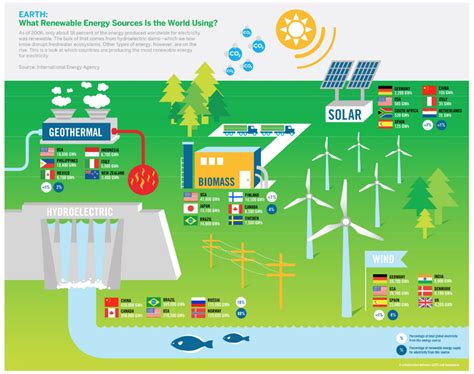In recent years, the global demand for renewable energy has experienced a significant surge, signaling a pivotal shift towards sustainable and environmentally friendly alternatives. As the world grapples with the urgent need to reduce carbon emissions and combat climate change, the field of renewable energy engineering has emerged as a critical player in shaping the future of energy. In this blog post, we will delve into the latest developments and innovations within the realm of renewable energy, from the rapid advancements in solar power generation and the harnessing of wind energy to the promising potential of emerging technologies in hydroelectric power and geothermal energy. Additionally, we will explore the innovative techniques being deployed to revolutionize biomass conversion and wave and tidal energy generation, as well as the integration of energy storage solutions for renewables and the significance of grid modernization and smart energy management. Join us as we unpack the essential role of renewable energy engineering in mitigating climate change and forging a sustainable energy landscape for the future.
Table of Contents
Increasing Demand for Renewable Energy
As the global awareness of the need to combat climate change continues to grow, there is an increasing demand for renewable energy sources. People are recognizing the importance of transitioning away from traditional fossil fuels and towards sustainable, clean energy alternatives. This shift is not only driven by environmental concerns, but also by the economic benefits and job creation opportunities that come with embracing renewables.
With advancements in technology, renewable energy sources such as solar power, wind energy, hydroelectric power, geothermal energy, biomass, wave and tidal energy are becoming more efficient and affordable. This has led to a surge in demand for these sources of energy, as they are now more accessible to both individuals and businesses.
Another driving force behind the increasing demand for renewable energy is the push for energy independence. Countries are seeking to reduce their dependence on imported fossil fuels and are looking towards domestic, sustainable energy sources to meet their needs. This has led to government policies and incentives to promote the adoption of renewables, further spurring the demand for clean energy.
As the demand for renewable energy continues to rise, there is a need for continued investment in research, development, and infrastructure. This will not only ensure that the supply of clean energy meets the growing demand, but also create opportunities for innovation and job growth in the renewable energy sector.
Advancements in Solar Power Generation
With the increasing demand for renewable energy, the field of solar power generation has been experiencing significant advancements in recent years. One of the most notable advancements is the introduction of more efficient photovoltaic panels that can convert sunlight into electricity with higher levels of efficiency. These panels are capable of capturing a larger percentage of the sun’s energy and converting it into usable power, making solar energy a more viable and reliable source of electricity.
Additionally, there have been innovations in energy storage for solar power systems, allowing for the capture and utilization of solar energy even when the sun is not shining. This has addressed one of the main drawbacks of solar power – its intermittency. Advances in battery technology have made it possible to store excess solar energy during peak production times and use it during periods of low sunlight, effectively smoothing out the supply of solar power.
Furthermore, the integration of smart grid technology has revolutionized how solar power is distributed and managed. Smart grids enable real-time monitoring and control of energy flow, allowing for more efficient use of solar energy and better integration with other sources of electricity. This has resulted in a more reliable and stable solar power generation system, contributing to its widespread adoption.
Overall, these advancements in solar power generation have propelled the industry forward, making solar energy an increasingly viable and attractive option for meeting the world’s growing energy needs in a sustainable and environmentally friendly manner.
Harnessing the Power of Wind Energy
Wind energy, a form of renewable energy, is becoming increasingly popular as a clean and sustainable alternative to traditional fossil fuels. The demand for wind energy has been on the rise in recent years as nations across the globe look for ways to reduce carbon emissions and combat climate change. The advancements in wind turbine technology have made it possible to capture and convert the kinetic energy of the wind into electricity on a larger scale than ever before.
One of the key innovations in wind energy is the development of offshore wind farms. By placing wind turbines off the coastlines, these farms can take advantage of strong and consistent ocean winds, providing a more reliable and consistent source of energy. These offshore wind farms have the potential to generate a significant amount of electricity, helping to meet the growing energy needs of coastal communities.
As we look towards a future powered by renewable energy, the harnessing of wind energy will play a crucial role in creating a more sustainable and environmentally friendly energy system. The continued research and development in wind energy technology will further improve its efficiency and cost-effectiveness, making it an increasingly attractive option for meeting our energy demands.
With ongoing investments and collaborations in the wind energy sector, we can continue to expand our capacity to harness the power of the wind and contribute to a cleaner and greener energy future.
Emerging Technologies in Hydroelectric Power
Hydroelectric power has long been a reliable source of renewable energy, but emerging technologies are making it even more efficient and cost-effective. One such technology is the development of more efficient turbines, which can harness the power of flowing water more effectively than ever before. These turbines can generate electricity from lower flow rates, making it possible to harness hydropower from smaller rivers and streams.
Another exciting development in hydroelectric power is the use of pumped storage. This technology allows excess energy from other renewable sources, such as solar and wind, to be used to pump water uphill, storing it until needed. When electricity demand is high, the water is released to flow downhill through turbines, generating power. This is a highly efficient way to store and utilize renewable energy.
Advancements in materials science are also playing a role in the evolution of hydroelectric power. New materials, such as composite materials and advanced coatings, are being used to improve the efficiency and durability of hydroelectric infrastructure. This allows for longer-lasting, lower-maintenance power generation facilities.
Finally, the integration of smart grid technology is revolutionizing the way that hydroelectric power is managed. By providing real-time data on energy demand and production, smart grid systems enable more efficient and effective distribution of hydroelectric power. This helps to optimize the performance of hydroelectric facilities and integrate them seamlessly into a modern energy grid.
Exploring Geothermal Energy Potential
Geothermal energy is renewable and sustainable energy derived from the heat of the earth’s core. It is an abundant source of clean energy that is produced by tapping into the natural heat of the earth’s mantle. This form of energy has the potential to power homes, businesses, and industries while reducing greenhouse gas emissions and mitigating climate change.
Geothermal power plants use the earth’s natural heat to produce steam that turns turbines, generating electricity. One of the key advantages of geothermal energy is that it provides a consistent and reliable source of power, unlike wind or solar energy, which can be intermittent. Additionally, geothermal energy production is not dependent on weather conditions, making it a stable energy source.
Exploring the potential of geothermal energy is crucial for increasing the diversification of our energy sources and reducing our reliance on fossil fuels. With advancements in drilling technology and exploration techniques, geothermal energy has the potential to be a significant contributor to the global energy transition.
As we continue to innovate and develop new technologies, the utilization of geothermal energy can play a vital role in meeting the growing demand for clean and sustainable energy. It is an exciting time for geothermal energy, as we unlock its full potential and harness the power of the earth’s heat to create a more resilient and eco-friendly energy system.
Innovative Biomass Conversion Techniques
Biomass conversion is a crucial process in the production of renewable energy. As global demand for sustainable energy sources continues to rise, the need for innovative techniques to convert biomass into usable forms of energy becomes increasingly important. Biomass conversion techniques involve transforming organic materials such as wood, agricultural residues, and waste into various forms of biofuel, which can then be used for electricity generation, heating, and transportation.
One innovative technique for biomass conversion is the use of advanced thermal processes such as pyrolysis and gasification. These processes involve heating biomass in the absence of oxygen to produce bio-oil, syngas, and biochar. These products can then be utilized as energy sources or as valuable resources for other industrial applications, effectively utilizing the entire biomass feedstock.
Another promising technique is the use of biochemical conversion methods, which involve breaking down biomass using various enzymes and microorganisms to produce bioethanol, biogas, and other valuable products. This approach offers the advantage of producing energy from a wide variety of feedstocks, including agricultural residues, algae, and organic waste.
Furthermore, the integration of innovative technologies such as advanced catalysts and biorefinery processes is expanding the range of biomass conversion techniques. These advancements aim to enhance the efficiency and sustainability of bioenergy production, ultimately contributing to the transition towards a more environmentally friendly and resource-efficient energy sector.
Revolutionizing Wave and Tidal Energy Generation
Wave and tidal energy have long been recognized as a potential source of renewable energy that can provide reliable power across the world. With the growing global demand for clean and sustainable energy, there has been a significant focus on revolutionizing wave and tidal energy generation in recent years.
The technological advancements in this field have been remarkable, with new and innovative designs of wave and tidal energy converters being developed to harness the power of the ocean. Engineers and researchers are working tirelessly to create more efficient and cost-effective systems that can withstand the harsh marine environment and produce electricity from the natural movements of the waves and tides.
One of the most exciting developments in wave and tidal energy generation is the use of advanced materials and manufacturing techniques to create durable and high-performance devices that can withstand the forces of the ocean. These technologies are helping to overcome the challenges associated with the deployment and maintenance of wave and tidal energy devices, making them more feasible and practical for widespread use.
Furthermore, the integration of automation and smart control systems is enhancing the operation and efficiency of wave and tidal energy generation. These systems allow for real-time monitoring and adjustment of the devices, optimizing their performance and maximizing the extraction of energy from the ocean, ultimately contributing to the advancement of renewable energy.
Integrating Energy Storage Solutions for Renewables
In today’s rapidly evolving energy landscape, the integration of energy storage solutions plays a crucial role in maximizing the potential of renewable energy sources. As the demand for clean and sustainable energy continues to grow, the need for efficient and reliable storage technology becomes increasingly important. Fortunately, advancements in battery and energy storage systems have opened up new opportunities for integrating renewables into the grid.
One of the key benefits of integrating energy storage solutions with renewables is the ability to address the issue of intermittency. While solar and wind power are dependent on weather conditions, storage systems can capture excess energy during periods of high production and release it during periods of low production. This helps to stabilize the grid and ensure a steady and consistent power supply.
Furthermore, energy storage solutions can also improve the overall efficiency and reliability of renewable energy systems. By storing excess energy and discharging it when needed, storage technologies can help to mitigate the variability of renewable sources, allowing for a more seamless integration into the existing energy infrastructure.
As the transition towards a more sustainable energy future continues, the integration of energy storage solutions will play a critical role in maximizing the potential of renewable energy sources. By addressing the challenges of intermittency and variability, storage technologies are paving the way for a more reliable, resilient, and efficient renewable energy ecosystem.
Grid Modernization and Smart Energy Management
Grid modernization and smart energy management are at the forefront of the renewable energy revolution. As the demand for clean and sustainable energy sources continues to grow, the need for a modernized and efficient energy grid becomes increasingly important. By integrating advanced technologies and smart management systems, the grid can better accommodate the fluctuations in power generation from renewable sources.
One of the key challenges in integrating renewable energy sources into the grid is the variability of generation. Solar and wind power generation, for example, are dependent on weather conditions and fluctuate throughout the day. Smart energy management systems can help to balance this variability by optimizing when and where the power is distributed. By using smart grid technologies, utilities can efficiently manage and control the flow of electricity, ensuring a reliable and stable grid.
In addition to managing the variability of renewable energy sources, grid modernization also involves the adoption of energy storage solutions. Energy storage technologies, such as batteries and pumped hydro storage, play a crucial role in storing excess energy during times of high generation and releasing it during peak demand. These storage solutions are essential in ensuring a consistent and reliable power supply, even when the sun isn’t shining or the wind isn’t blowing.
Furthermore, smart energy management systems enable consumers to actively participate in energy management. Through the use of smart meters and demand response programs, consumers can better understand their energy usage and adjust their consumption based on real-time pricing and grid conditions. This not only helps to increase energy efficiency, but also facilitates a more stable and resilient grid.
Climate Change Mitigation through Renewable Energy
Climate change is one of the biggest challenges facing humanity today, and the need for sustainable, renewable energy sources has never been more urgent. The increasing demand for renewable energy solutions is driven by the need to reduce greenhouse gas emissions and minimize the impact of climate change on the planet. As the global population continues to grow, so does the demand for energy, making it crucial to explore and invest in advancements in solar power generation, harnessing the power of wind energy, and other clean, renewable sources.
One of the most promising areas of renewable energy is grid modernization and smart energy management, which aims to optimize the integration and distribution of renewable energy sources into existing power grids. By implementing advanced technologies and energy storage solutions for renewables, it becomes possible to reduce energy waste and ensure a more reliable and stable power supply, even when the sun isn’t shining or the wind isn’t blowing.
Furthermore, climate change mitigation through renewable energy involves exploring innovative techniques for biomass conversion and maximizing the potential of geothermal energy to provide consistent, low-carbon energy. As technology continues to evolve, new opportunities for revolutionizing wave and tidal energy generation are also emerging, offering a promising avenue for sustainable energy production.
By embracing these cutting-edge advancements in renewable energy, we can work towards a more sustainable and resilient future, mitigating the impacts of climate change and ensuring a cleaner, greener planet for future generations.





